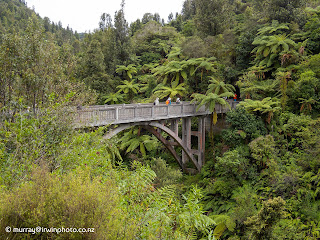On the 11th 0f February 2024 we met up with a small group of friends and family at Ohakune to prepare for our adventure starting the next day. After packing our personal belongings required for the next four days isolated from the outside world into water tight barrels, we all retired to our beds in anticipation of our early start in the morning.
We regrouped in the morning at Canoe Safaris, Ohakune, where we were welcomed by our two guides onto a small bus for the one and a half hour drive to Whakahoro, our entry point to the Whanganui River. During the bus trip we met the other members making up our group of eleven, plus our guides. Having loaded our canoes with copious amounts of gear to support us all for the next four days, we received instructions on handling our canoes and a safety briefing before paddling past the point of no return. It was explained to us before our departure that once we entered the Whanganui River from the Makokoti Stream tributary we were committed to four days navigating the river to Pipiriki 90 kilometres downstream as there was no road access to the Whanganui River until then.
Administered by the Department of Conservation as part of the New Zealand Great Walks network, the camp sites have to be booked in advance during the Great Walks season. Canoe Safaris took care of our camp site bookings and although we stayed in tents each night our guides prepared lovely tasty meals preceded by appetisers, beer and bottled New Zealand wines. The cooked and continental breakfasts prepared each morning were equally delicious. Stopping each day on the river for morning and afternoon teas plus satisfying lunches it was a good thing we were burning up plenty of calories paddling our canoes.
On day three we left our canoes for a side trip walking through the lush native forest to the ‘Bridge to Nowhere’. This abandoned structure has an odd attraction probably due to its mysterious title. It was constructed by the New Zealand government to improve access to farmland balloted to returning servicemen from World War One as a soldier settlement scheme in the Mangapurua Valley. However by the time it was completed in 1936 most of the pioneer farmers had left their holdings. Beaten by the rugged topography, covered in dense bush which had to be cleared before the land could be farmed, it was just too tough. All that remains of the Mangapurua settlement is the impressive steel reinforced concrete bridge 40 metres above the ravine it spans.
Our last night on the river was spent at the Ramanui campsite, a short walk to the Bridge to Nowhere Lodge, where wine, beer and potato crisps were available and enjoyed after three days of isolation.
Day four ended our journey at Pipiriki where we loaded the bus and trailer for the return trip to Ohakune.
Our four day trip down the Whanganui River was awesome and made all the better by the team at Canoe Safaris, Ohakune. We believe that a moderate degree of fitness and preferably some boating or canoeing experience are advisable for this adventure. The many rapids we encountered on the river were manageable and became good fun as we gained experience with them. The scenery was stunning and this adventure should be on every Kiwi’s ’Bucket List’.




















































